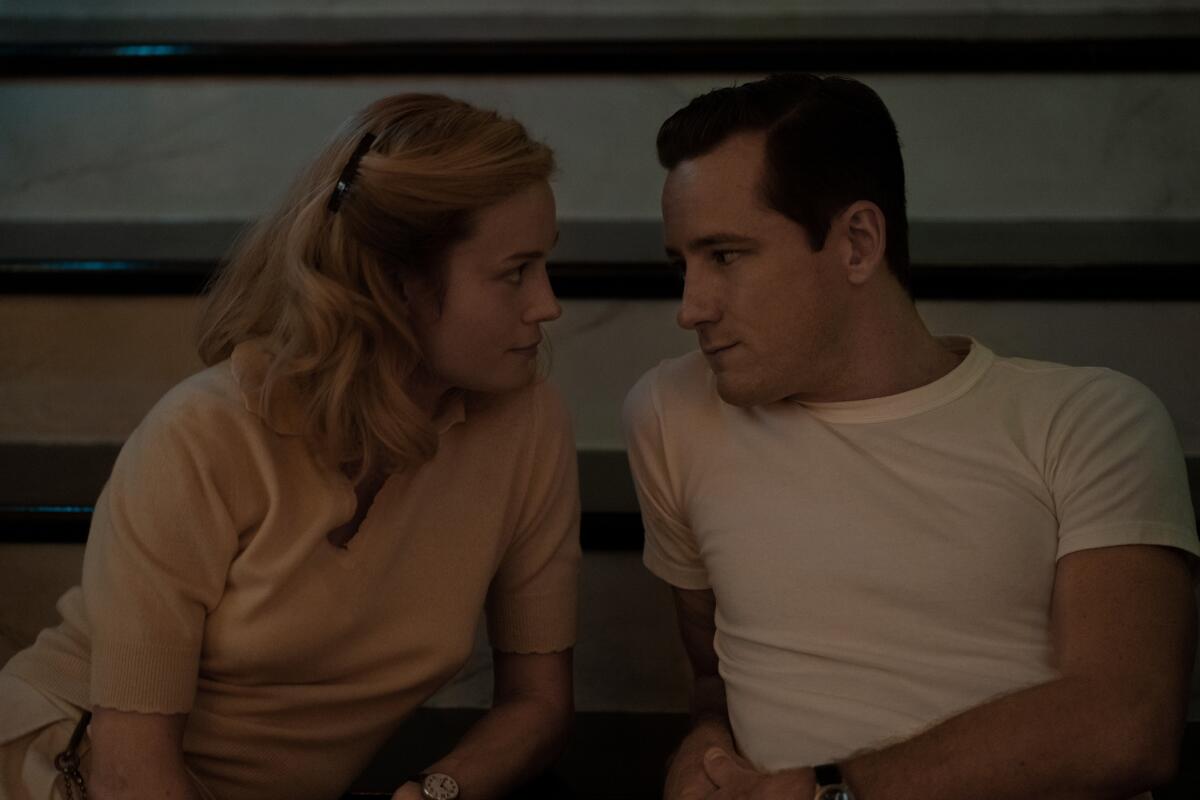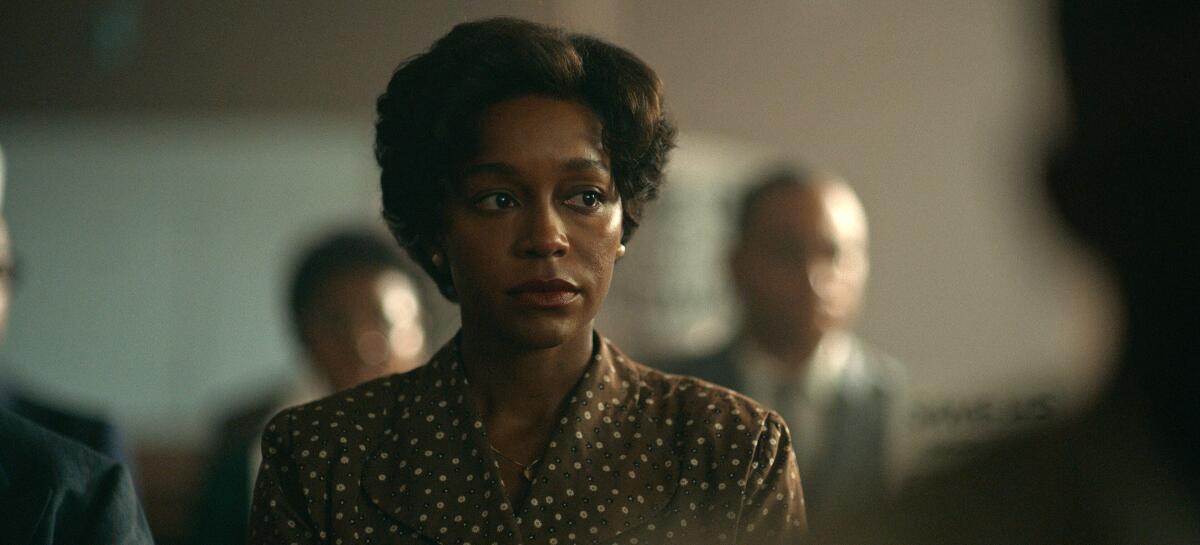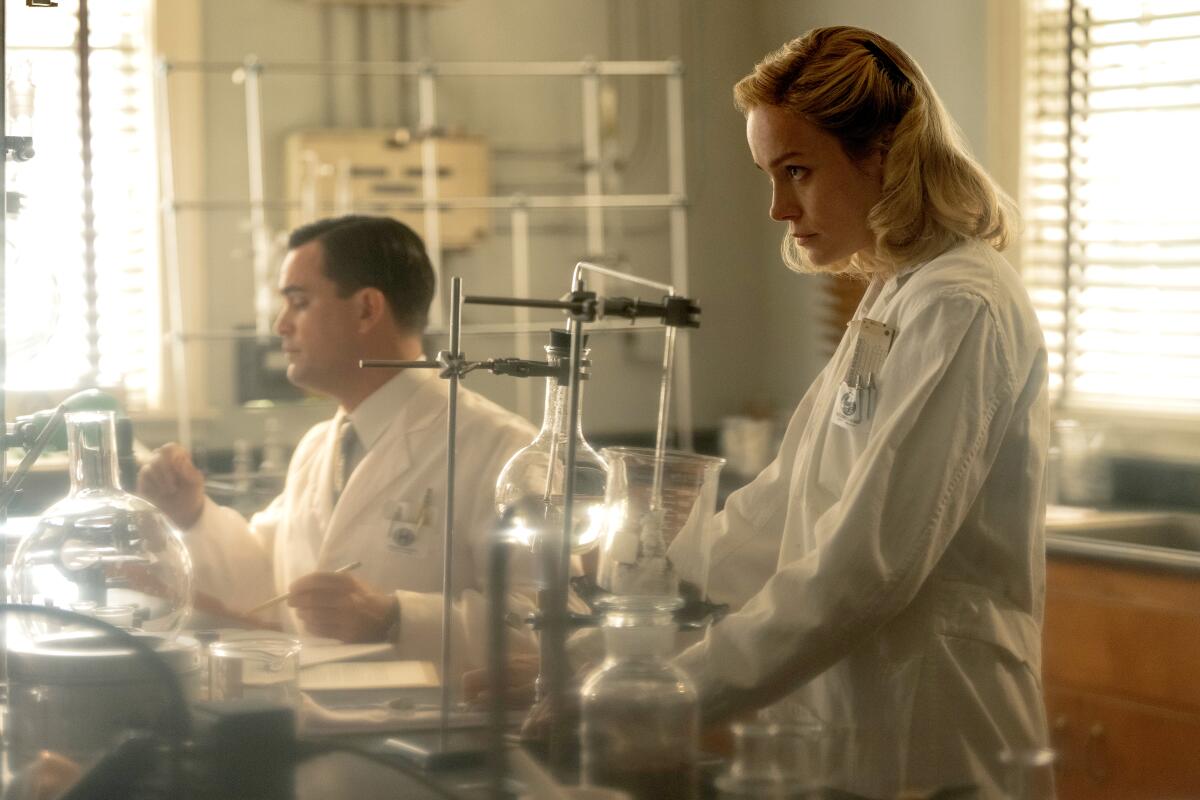Plenty of surprises bubble up in ‘Lessons in Chemistry’

- Share via
When Lee Eisenberg read Bonnie Garmus’ bestselling novel “Lessons in Chemistry,” he was floored by the protagonist, Elizabeth Zott, a brilliant chemist in the 1950s who was stifled — and worse — by the men she worked for, and who built walls to protect herself from further pain. But life had something else in store. “The twists and turns were completely unexpected to me,” says Eisenberg (“The Office,” “Jury Duty”). “As someone who does this for a living, I can usually see where things are headed, and the book was constantly surprising me.”
He then surprised himself, calling Apple TV, where he has a deal, and asking to be involved in their adaptation of the book in any way possible. They happened to need someone to write the limited series.
The prospect terrified him on several levels. “I had never written anything by myself in the history of my career, I have never adapted anything — which I did not lead with when I was talking to Apple — and it was obviously a departure from what I’ve worked on in the past.” But he connected with the material, and with executive producer and star Brie Larson when they first met over Zoom. “Being open to the element of surprise was something we talked a lot about,” he says of the book’s central theme. “That was something that really applied to the writers room and how we approached the show.”
Sarah Adina Smith, director and executive producer on the first two episodes, feels that could describe her involvement as well. Coming from a darker genre film background (“Buster’s Mal Hart”), she wasn’t sure she was right for the show. “In some ways the lesson of ‘Lessons in Chemistry’ is about staying open to things that are outside of your life’s plan, and this project was that for me,” she says. “It was not something I was looking for, it was a bit of a left turn, and then it ended up being so rich and so meaningful, with some of the most heartwarming collaborations I’ve ever had, on both sides of the camera.”

More surprises awaited. They were searching for someone to play the role of Harriet, an older white woman who lives across the street from Elizabeth and becomes a close friend. At the same time, creator and executive producer Eisenberg says, “We had seen Aja Naomi King, and fell in love with her, and we were thinking about her for a different role.” Then it hit them: Why not change the role of Harriet for King? They rewrote her as a young Black woman trying to make it in the male-dominated field of law, while also working to protect her vibrant, predominantly Black neighborhood from destruction by the proposed 10 Freeway. “That was a story that felt it could run in concert with Elizabeth’s story, but was even more tragic,” Eisenberg says. (And the history of L.A.’s Sugar Hill.)
When Harriet stands before the white men of the Los Angeles City Council to argue her case, “Aja does this thing with her voice, it’s kind of high and a little vulnerable, and she’s so sweet, she seems like a babe in the woods, but she is a stone-cold killer,” Eisenberg says. “These men are so condescending to her, and then in a moment her voice changes, and she devours them.” Smith adds that during those speeches, “You could hear a pin drop from a mile away. It felt like we all had something to learn from this character, and we wanted to let Aja be our guide.”
Their next revelation was actor Lewis Pullman as renowned chemist Calvin Evans, who falls in love with Elizabeth. “He felt like a discovery every day,” says Eisenberg. “My wife is smitten with him; she couldn’t breathe whenever he came onscreen, and I was moved to tears watching dailies.” (Eisenberg’s wife, journalist Emily Jane Fox, also wrote on the show.) Smith calls him a dream to work with. “He’s such a generous actor; as a director and an audience member, you feel like every unconscious and conscious process in his mind you can see in the pores of his being.”
Smith and Eisenberg shared a concern that the lab scenes would be boring; “it’s a lot of pipetting clear liquids into other vessels, and a lot of repetition, it’s not that riveting to watch,” Smith says. “I remember almost overcompensating at first.” They needn’t have worried — the real-life chemistry between Larson and Pullman was all they needed.

As the love story blossoms, Smith’s pace is unhurried, allowing the couple to coalesce naturally. “I felt like we made time stop for these two characters, and wanted to capture some sense of eternity in the moment, which I know perhaps sounds grandiose, but when we fall in love, that’s what it feels like — a moment that contains the infinite,” says Smith.
And none of it would have worked without their Oscar-winning star. Larson, who studied chemistry, cooking and rowing as she prepared for the role, “is the hardest-working person I’ve ever met,” Smith says. “She carries the series from start to finish, and she was my most key partner in terms of setting up this world and the tone. She’s just as committed to a joyful process as she is to her craft, so in between setups, she would be leading games with the other cast members, and keeping everybody laughing and happy.”
Adds Eisenberg, “Brie is fiercely intelligent, she is hilarious, she’s incredibly sweet, and there’s a gentleness and also a steeliness to her. She’s also beautiful and stylish, and she can be a little bit dorky — all of the things Elizabeth had, Brie ticked off.”
No surprises there.
More to Read
From the Oscars to the Emmys.
Get the Envelope newsletter for exclusive awards season coverage, behind-the-scenes stories from the Envelope podcast and columnist Glenn Whipp’s must-read analysis.
You may occasionally receive promotional content from the Los Angeles Times.






